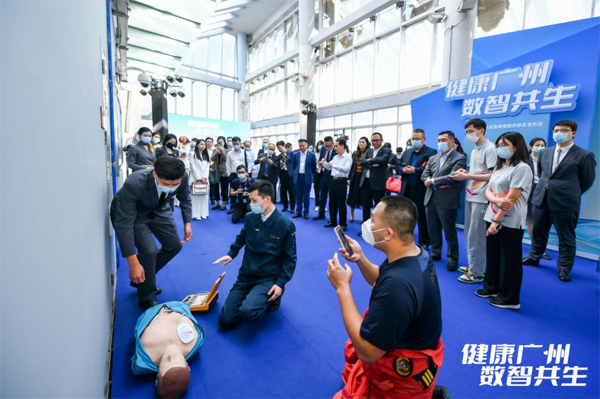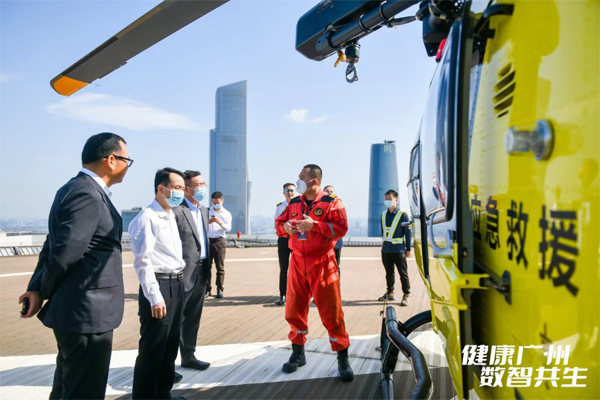Digitalized emergency rescue system launched in Tianhe
The building digitalized emergency rescue system was recently launched at the Yuexiu Financial Tower in Tianhe district, becoming a demonstration pilot site of its kind in Guangzhou.
When life-threatening incidents happen, the system allows people to call for help by scanning a code through WeChat and activate the building emergency rescue SaaS system. After the system is activated, it will take eight seconds to complete the call for help, locate the person that scanned the code, and dispatch emergency personnel to their location. Within one minute, emergency personnel will arrive at the location and perform chest compression rescue. Within two minutes, automated external defibrillators (AED) will be sent to the location for defibrillation rescue.

An emergency rescue demonstration takes place at the Yuexiu Financial Tower in Tianhe district. [Photo/WeChat account: tianhefabu]
The launch of the digitalized emergency rescue system is expected to help effectively deal with high-rise safety accidents and ensure the life, health, and safety of employees in high-rise buildings, said Li Runpei, deputy director of the Guangzhou bureau of emergency management.
To date, more than 600 QR codes have been posted in public areas of the Yuexiu Financial Tower, and an automatic external defibrillator has been placed on the first floor of the building. The tarmac on the roof of the building can also accommodate helicopters carrying firemen and medical workers in cases of sudden emergencies.
In addition, an emergency rescue volunteer union was set up the same day, including representatives of buildings in Guangzhou, emergency rescue experts, and tenants.

The tarmac on the roof of the Yuexiu Financial Tower. [Photo/WeChat account: tianhefabu]
By the end of 2021, there were 2,164 standard office buildings in Guangzhou, few of which have a relatively complete emergency rescue service system and a health center for tenants.
"The launching of the building digitalized emergency rescue system is just a start, with more units expected to apply this system in Guangzhou's commercial office buildings in the future," said Gong Yuan, dean of the Greater Bay Area Building Economy Research Institute.
"It is hoped that this will accelerate the informationization process to create a smart and digitalized Guangzhou, as well as be a vital part of a new pattern of international safety, health, and ecological urbanization for cities in the Guangdong-Hong Kong-Macao Greater Bay Area."
